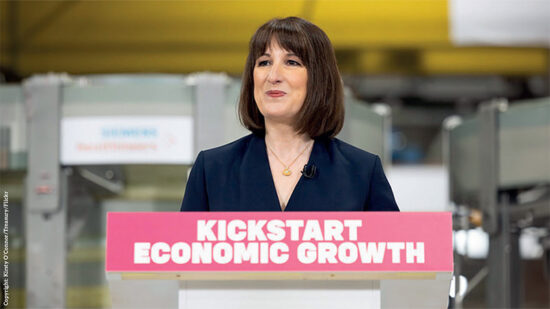Investing for income is always a common aim, particularly for those heading into retirement.
It is generally considered an investment style but, according to David Jane, manager in Premier Miton’s macro thematic multi-asset team, it can be reframed as an ‘output’.
In a commentary note, Jane explained this approach involves shifting the focus from the assets that are the fund’s inputs to the actual income it outputs.
“Most fund managers running income strategies conceive of income as an investment style, they believe that by favouring higher yielding shares, that may give them an investment edge over time,” he said.
“That has certainly been true for various periods in the past, although in recent years growth has been the dominant style.
“With growth outperforming income for an extended period, even income managers tended towards a greater growth bias, and the Investment Association obliged by reducing the income requirement on the income sectors.”
Jane said that in running the firm’s Cautious Monthly Income fund, the team avoids the typical bias towards higher yielding shares and bonds.
“We certainly do not target a yield for the fund,” he said. “We see income as the output on the fund not an input. The output we are seeking is not yield per se but an income stream that grows in line with inflation over time.
See also: What does 2024 hold in store for the wealth management industry?
“This allows us the flexibility to invest in any asset class or region to meet the fund’s overall objective, so long as the income and risk requirements are met,” Jane continued. “We do not even limit ourselves to equities and bonds and are happy to include such assets as commodities, even though they do not pay any income.”
Jane said this way of working is part of a wider aspiration to engage in ‘flexible thinking’ while managing money.
“Over the past decade or so this flexibility has served us well as growth as an investment style has been performing well, while income has lagged.”
He explained that having flexibility to invest in growth sectors and themes has enabled positive capital returns while still generating income. It is difficult to grow an income stream over time if the capital value of the fund is not also growing, he noted.
Turning to the outlook for the near term, Jane said his team believes now that bond yields are at more normal levels and inflation is back to stay, income as a style may again perform well.
“The previous decade or so was highly abnormal, particularly post global financial crisis. Rates were held abnormally low, and inflation was not an issue. This led to an environment where bonds and equities became negatively correlated and yields consistently fell.
See also: Why investors need to take outlooks with a pinch of salt
“Portfolio construction in this environment was relatively straightforward: combine growth equities with long duration bonds and all is well, during weak equity environments your bonds might bail you out.”
A different approach is now required though, according to Jane.
Under a ‘more typical regime’, equities and bonds are positively correlated and weak equity markets are more likely to be associated with periods of higher inflation, rather than deflationary recessions. In this environment a different approach may be required to construct an income portfolio, he said.
With bonds no longer a hedge to equity, a better hedge would be inflation beneficiary assets such as oil and commodities, as well as hard asset-based businesses in equity and property.
See also: Mattioli Woods eyes ‘robust acquisition pipeline’ as assets inch down to £15.2bn
Combining these with equity may be a less volatile strategy going forward than the 60/40 equity bond mix.
“History would suggest that if current conditions persist that not only may a growing income be an important demand from clients as inflation bites, but that income strategies may perform well compared to the recently favoured 60/40 and growth biased approaches,” Jane said. “Portfolio constructions may need to adapt, but this could very much favour an unconstrained income style.”








